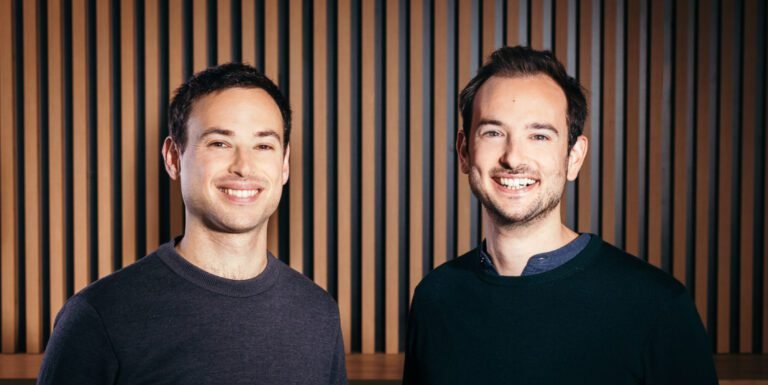C12 announces that it recently raised a funding round of 18 million euros ($19.4 million at today’s exchange rate). Originally founded in 2020 as a spin-off from the École Normale Supérieure Physics Laboratory, the company is working on a unique process to create quantum computers based on carbon nanotubes.
Although the concept of quantum computing is not new, it is still a work in progress. Many scientific groups have approached this topic from different angles. The goal is to create a quantum computer at a scale that can perform calculations with a small number of errors.
But wait, why do we need quantum computers in the first place? Computers as they exist today are based entirely on electronic transistors. And we’ve gotten really good at making transistors smaller so we can pack more transistors on a single chip. As a result, computing power has advanced at an exponential rate over the past 60 years.
And yet, the current computer architecture has its limits. Even if companies start building larger data centers, some problems simply can’t be solved with traditional computing. It is also unclear whether Moore’s Law will remain in effect for years to come.
This is where quantum computers could come in handy.
“If we want to create a model – an exhaustive simulation of a chemical reaction – to know how new drugs are going to interact with our cells, this is not possible with a conventional approach,” C12 co-founder and CEO Pierre Desjardins ( image right ) told TechCrunch.
“There are a number of optimization problems that need to be solved, whether in transportation, logistics or manufacturing. They’re impossible to run on a conventional computer because there would be too many variables, too many possible scenarios,” he continued.
Matthieu Desjardins, his brother, has a PhD in quantum physics and acts as the company’s CTO. At one point in our conversation, Pierre Desjardins even called his brother a “scientific genius.”
And since it’s 2024, there’s even an artificial intelligence angle that should convince you that quantum computing research is important. “Today, training a large language model also means consuming a huge amount of energy,” said Pierre Desjardins. “And quantum is also a computational method that uses much less energy.”
How to build a quantum computer
C12 says the two key differences with other groups working on quantum computers are that it uses a different material — carbon nanotubes — and has a specific manufacturing process — a now-patented nanoassembly process.
“Today, I think we are the only ones in the world who control this very special process, which involves placing a carbon nanotube on top of a silicon chip. And what’s absolutely fascinating is the scale. The diameter of a carbon nanotube is 10,000 times smaller than a human hair,” said Pierre Desjardins.
Research teams working for large companies such as Google, IBM or Amazon are currently focusing on a different process. Most of them use superconducting materials, such as aluminum, on top of a silicon substrate.
According to C12, while this method has led to early discoveries. However, using aluminum isn’t going to work at scale because of interference as you start adding more qubits. Although quantum is not yet mature, C12 believes it is working on next-generation quantum computers compared to these aluminum-based processes.
The company has set up its first production line in a basement near the Panthéon in Paris. In this facility, they fabricate carbon nanotubes, test these tubes, and then integrate them with the silicon substrate.
“Now it’s up and running. Today, we produce about one chip per week, which we then test in our mini data center,” said Pierre Desjardins. But don’t expect to see a quantum computer just yet. “We are still only validating fundamentals,” he added. The company is focusing on chips with one or two qubits at the moment.
Quantum simulation
As research and development work progresses, the C12 team is also working on its business ecosystem. Like many quantum companies, C12 has created an emulator called Callisto. Emulators allow programmers to write and run some quantum code on a classical computer.
They’re not going to get the results they would with a quantum computer, but at least they’ll be ready to hit the ground running when quantum computers are available.
“We are currently focusing on two industries, the chemical industry and the energy industry. The chemical industry uses it to simulate chemical reactions and the energy industry mainly uses it for optimization problems,” said Pierre Desjardins. In particular, the startup has a partnership with Air Liquide.


And if we go back to the funding round, Varsity Capital, EIC Fund and Verve Ventures are investing in it. Existing investors 360 Capital, Bpifrance’s Digital Venture fund and BNP Paribas Développement are also participating once again in this round.
Today 45 people from 18 different nationalities work for C12, including 22 Ph.D. With the newly raised capital, C12 plans to sign more collaborations with industry partners. But the company also has a research goal.
“The other goal is to realize, for the first time, a quantum operation between two qubits that are at a great distance from each other,” said Pierre Desjardins. By long distance, he means “tens of micrometers” apart. It doesn’t seem like much, but it will be key when it comes to scaling quantum computing.
